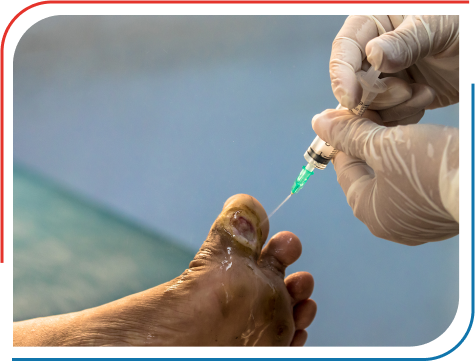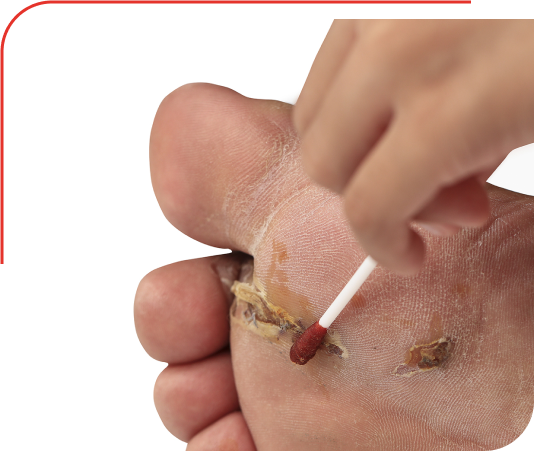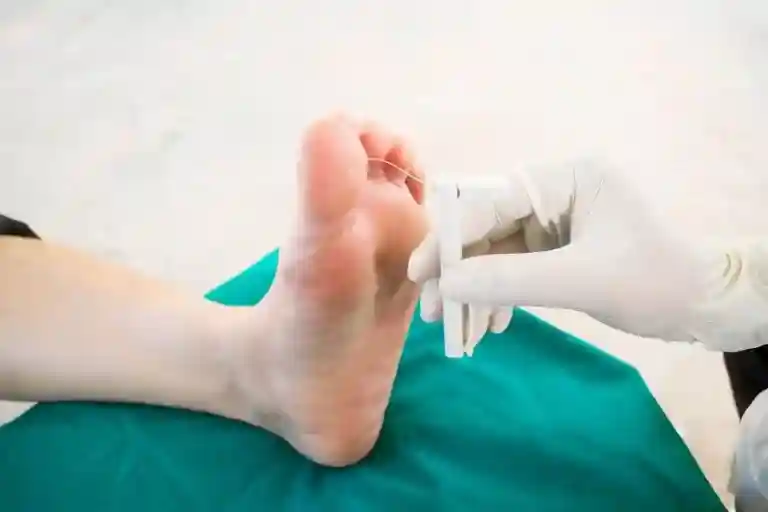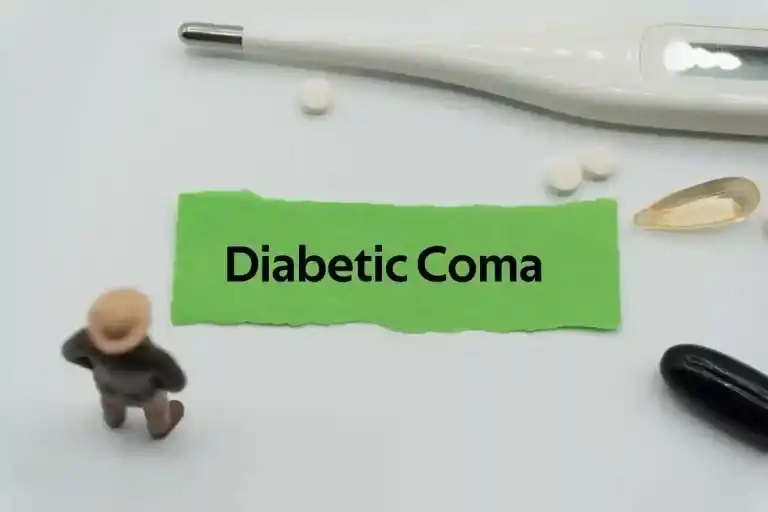Home » Speciality » Diabetic Foot Ulcer Treatment
DIABETIC FOOT
ULCER TREATMENT
which is why we offer advanced diabetic foot ulcer treatment options.

Why Choose Wockhardt Hospitals for Diabetic Foot Ulcer Treatment?
Wockhardt Hospitals is one of the most renowned hospitals for diabetic foot ulcer treatment in India. We strive to offer the best treatment for the condition to reduce the chances of amputation of the affected area. Our board-certified and highly experienced doctors follow the patient-centric approach during the treatment for utmost satisfaction. Our state-of-the-art infrastructure, world-class facilities, cutting-edge technology, and well-trained medical staff have made us the most preferred hospital for diabetic foot ulcer operation and post-operative care.
We are currently using the GFC or Growth Factor Concentrate Therapy, which is a groundbreaking therapy. It uses the patient’s platelets which are purified and used as an acellular growth factor. This gives consistent quality and quantity. Thus, this therapy has a high chance of reducing the amputation of the feet and is the best treatment for diabetic foot ulcers. Also, we are amongst the top hospitals to use GFC for foot ulcer treatment for diabetes.
Renowned Diabetic Foot Ulcer Doctors
at Wockhardt Hospitals
- Mumbai Central
- Mira Road
- Nagpur
- Rajkot
What is Diabetic Foot Ulcer?
A diabetic foot ulcer is a skin sore with skin thickness and skin loss on the foot due to vascular or neuropathic complications in type 1 and 2 diabetes mellitus patients. Approximately 34% of diabetic patients get diabetic foot ulcers during their lifetime. The risk factors of diabetic foot ulcers are as follows :
- Type 2 diabetes is more prevalent than type 1.
- Having diabetes for more than ten years.
- Family history of diabetic foot ulcers.
Foot ulcers are usually caused due to high blood sugar levels damaging the sensory nerves in peripheral neuropathy. This results in altered or complete loss of sensation and inability to feel pain. It is also caused by damage in the blood vessels due to the long duration of blood sugar and a decrease in the blood flow to the feet.
What are the Symptoms
of Diabetic Foot Ulcer?
The most common symptom of diabetic foot ulcers is black tissue surrounding the ulcer, which forms because of the absence of healthy blood flow to the area around the ulcer. Also, you might see partial or complete tissue death due to infection around the affected area, causing pain, numbness, and pus discharge. However, some other signs and symptoms of diabetic foot ulcers are :
- Darkened skin on the affected area
- Numbness
- Loss of hair around the affected area
- Pain and tingling
- Loss of senses
Also, look out for the following symptoms of diabetic foot ulcers :
- Discharge of fluid or pus from the ulcer
- Foul smell and swelling
- Changes in the skin or toenails (cuts, blisters, sores, or calluses)
- Skin discolouration and redness at times.
Sometimes, diabetic foot ulcers don’t show symptoms until they become infected.
What are the
Causes of Diabetic Foot Ulcer?

Diabetic foot ulcers are commonly caused by the following
- Poor Blood Circulation
When the blood does not flow to your feet efficiently, it is called poor blood circulation. It does not allow your blood to flow to your feet efficiently.
- Nerve Damage
Nerve damage can lead to loss of sensation in your feet. They might feel tingly and painful at times, which might cause ulcers on your feet.
- Hyperglycemia (High Blood Sugar Level)
Hyperglycemia slows down the healing process, which leads to ulcers, therefore, people with type 2 diabetes have a hard time fighting off ulcer infections.
Procedures to
Be Taken
Diabetic foot treatment in India is very common. When you have diabetic foot ulcers, it is recommended to stay off the feet. This is because pressure from walking can lead to painful experiences and might worsen the condition. The doctors might recommend you wear the following to prevent the pain:
- Shoes for diabetes people to prevent corns and calluses
- Foot braces
- Casts
- Compression wraps
You must see a doctor immediately for a diabetic foot ulcer treatment. This is because the infection is a severe complication of a foot ulcer. Doctors usually remove the ulcers using debridement (removing dead skin that might have caused the ulcer). However, all ulcer infections are not treated the same way. The tissue extracted during debridement is sent to the lab to determine the type of antibody required. If there is a severe infection, the doctor might ask you for an X-ray to assess the bone condition. If you have diabetes, the ability to fight off an infection reduces, and the wound does not heal on time. Thus, it gets deeper into the skin and affects the bones.
You can prevent the foot ulcer with the following :
- Frequent dressing of foot ulcers to keep them dry will ward off infections.
- Foot bath
- Use disinfectant around the ulcer area.
- Enzyme treatments
- Dressing it regularly to inhibit bacterial growth.
Your doctor will also provide antibiotics, antiplatelets, and anti-clotting medications to treat ulcers and slow infections. If the condition is severe and is worsening with each passing day, the doctors might recommend diabetic foot operations to shave down the bone or remove foot abnormalities such as hammertoes and bunions. When no option is left, the doctor might amputate the affected area.
Types of
Diabetic Foot Ulcers
Diabetic foot ulcers can occur anywhere and anytime if you suffer from type 2 diabetes mellitus. Several types enlisted below require extensive foot ulcer treatment for diabetes.
- Neuropathic Ulcers
Neuropathy or nerve damage ulcers are one of the long-term complications of type 2 diabetes. It damages the nerves that carry the touch sensation, temperature, and pain to the feet and legs. This ulcer is usually caused by trauma, which we neglect due to the lack of sensation around the affected areas. Sores and calluses are formed in these areas, and as they become thick, they traumatize the area beneath the skin. Hence, any cuts or bruises, that are left unnoticed, can get severe and form ulcers.
- Neuroischemic Ulcers
Neuroischemic ulcers have a high chance of amputation, requiring an all-inclusive foot ulcer treatment for diabetes. This is because they do not heal properly, and they go deep down into skin and damage the tissue and bones. They are pale yellow and might have thin film skin, which is sometimes raised. Also, they usually grow on toenails.
- Ischemic Ulcers
Ischemic means reduced blood flow to some parts of the body, which damages tissues and causes the cells to die. Ischemic ulcers occur when there is an abnormal narrowing of arteries, also known as peripheral artery disease. These are slow-healing and rapidly damaging ulcers. They are usually pink and have shallow open lesions with pink tissue surrounding them. Also, dry ulcers look like black necrotic scabs.
Diagnosis of Diabetic
Foot Ulcers
You can get your diabetic foot ulcer diagnosed at your regular healthcare provider, but visiting an expert is advisable. Once you visit a doctor, they can tell you the type of ulcer you have by –
- The appearance of the ulcer
- Location of the ulcer
- The appearance of the surrounding skin and the border of the ulcer.
The doctors will ask you a few questions to rule out certain skin conditions. Based on these, the doctors will ask you to do the following tests –
- X-rays to assess the bone alignment
- MRI scans generate 3D images of soft tissues to see the extent of the damage.
- Blood tests if there are signs of infections, such as redness, swelling, and warmth in the foot.
Recovery After Diabetic
Foot Ulcer Treatment
Recovering from diabetic foot ulcers is pretty viable if you follow every medical advice your doctor gives. You need to keep your ulcer clean and disinfected. Also, to prevent the formation of new ulcers, doctors recommend custom orthotic shoe inserts to align the bones by distributing the body’s weight evenly during movement. This eliminates the stress that is susceptible to ulcers.
Diabetic Foot Ulcer Care Blogs
FAQs on Diabetic Foot Ulcer Treatment
Q. What are the stages of diabetic foot ulcer treatment?
Diabetic foot ulcers, a severe complication of diabetes, progress through distinct stages
- Stage 1: Skin Changes (Pre-Ulcer) – Dryness, redness, warmth, calluses, blisters, or loss of hair on the foot.
- Stage 2: Shallow Ulcer – Small, superficial break in the skin, often painless.
- Stage 3: Deep Ulcer – Penetrates deeper tissues, exposing tendons, muscles, or bones. It can be painful for many patients.
- Stage 4: Infected Ulcer – At this point, the forefoot has gangrene, and the front of the foot or the heels contain dead tissue. Requires immediate medical attention.
- Stage 5: Gangrene – The complete foot is affected by gangrene. Amputation can be the only choice to keep an affected person’s life.
Q. Can diabetic foot be cured?
Q. Can a podiatrist treat a diabetic foot ulcer?
Q. How can a Diabetic Foot Ulcer Be Prevented?
- Wash your feet daily
- Don’t walk barefoot
- Wear shoes that properly fit
- Eat a proper diet rich in vitamins and minerals such as – zinc, copper, protein, etc.
- Lastly, check for any irritation or numbness on the feet.
Q. Can I treat a diabetic foot ulcer at home?
- Add zinc to your diet
- Apply aloe vera gel to soothe the inflammation and irritation
- Use tea tree oil to ward off the infections
- Use coffee as it stimulates blood flow
However, for chronic diabetic ulcers, you must visit a doctor immediately for clinical assessment, evaluation, proper diagnosis and individualistic treatment plans.
Q. How long does a diabetic foot ulcer last?
Q. What is the success rate for Diabetic Foot Ulcers treatment?
31% of diabetic ulcers are cured after 20 weeks with proper wound management. Similarly, 24% of diabetic ulcers heal completely after 12 weeks of appropriate treatment.
Q. What is the Diabetic Foot Ulcers treatment cost in India?
The cost of Diabetic Foot Ulcer treatment in India can range from Rs. 30,000 to Rs. 1,50,000. This significant cost variation is partly due to the different therapies used, depending on the severity of the disease.


























